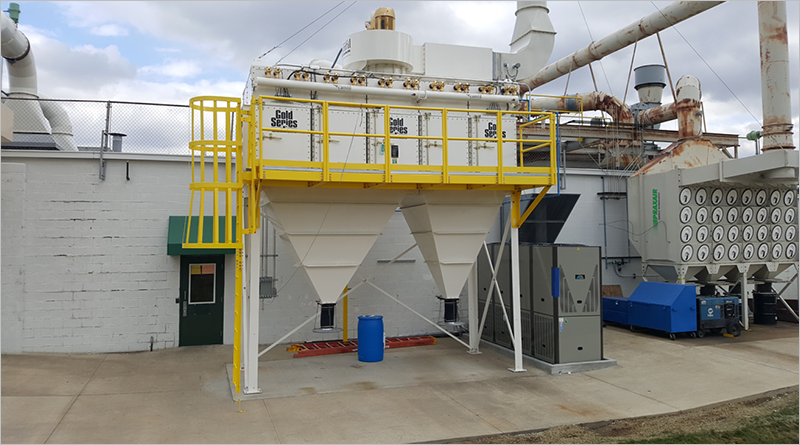Combustible Dust Collection Systems
High Efficiency + NFPA Compliance
Combustible dust explosions are a risk in many areas of a plant—but one of the most common locations is in the dust collection system itself. How can you know if your system complies with local standards? What steps should you take if it doesn’t? To minimize risk to your employees, your property, and your business, it is essential to identify and resolve potential explosion hazards as soon as possible.
Linde’s experts can help you identify and plan for compliance with all applicable combustible dust health and safety requirements. Our MetFab Productivity Specialists (MPS’s) will work with you to plan and implement cost-effective solutions.
Outlet Isolation
The iSMF isolates downstream equipment from progression of a flame front during an explosion. A safety monitoring filter can manage exhaust fl ow when your dust is explosive to prevent transmission of explosive dust (fuel) from the collector.
Stinger Inlet Isolation Valve
Prevents a deflagration (explosion), that could occur in the dust collector, from traveling back down the inlet pipe back into the workspace or manufacturing process.
Explosion Vent or Flameless Vent
Designed to be the weak link of the vessel, explosion vents open when a predetermined pressure is reached inside the dust collector, allowing the
overpressure and flame fronts to exit to a safe area. Explosion vents minimize damage to the dust collector caused by over pressure created by a deflagration.
Installed over a standard explosion vent, flameless vents extinguishe the flame front in the vented area without allowing it to exit the device.





























